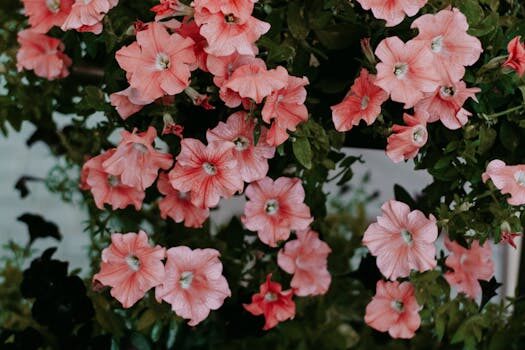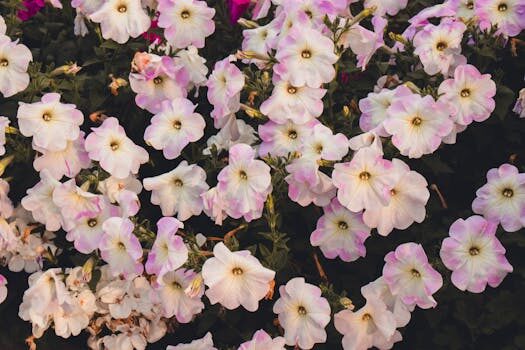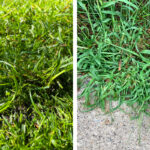Petunias, the quintessential summer bloom, bring vibrant color and life to any garden. Their bright flowers are a sight to behold, but to keep them at their best, deadheading is a crucial practice. This process involves removing spent blooms to encourage more flowers to grow, keeping your petunias bursting with color all season long.
How often should you deadhead petunias?
Consistency is key when it comes to maintaining petunias. To ensure continuous blooming, gardeners should aim to deadhead these flowers at least once a week. However, during the peak of their blooming period, it may be necessary to perform this task more frequently, even multiple times per week. The process is simple and can have a profound impact on the vitality of your petunias.
Deadheading not only encourages new growth but also prevents the plants from wasting energy on seed production. This redirection of energy helps to sustain a vibrant display of color throughout the summer months. So, make a habit of checking your petunias regularly and removing the faded flowers to promote a healthier, more floriferous plant.
It’s also important to note that different petunia varieties may have varying needs. For example, Wave petunias are known for being self-cleaning, meaning they require less frequent deadheading. Despite this, giving them a little attention can still be beneficial.
What happens if you don’t deadhead petunias?
Skipping on deadheading can lead to several adverse effects. Firstly, petunias may begin to look unkempt, with wilted and brown flowers detracting from their beauty. More importantly, if spent blooms are not removed, they will eventually go to seed, signaling to the plant that its primary job of reproduction is complete.
This can result in a significant reduction in blooming, as the plant shifts its focus from flower production to developing seeds. The overall growth of the petunias may also become leggy, with fewer leaves and a decrease in the lushness of the plant.
Ultimately, failing to deadhead will shorten the flowering season of your petunias, leading to a less vibrant garden. To avoid these issues, ensure that you are proactive in removing spent blooms.
How to deadhead petunias in pots?
Deadheading petunias in pots follows the same principles as with those planted in the ground but with some added convenience. Potted petunias can be easily accessed, and you can be thorough in removing all the faded flowers. The key is to be gentle to avoid damaging the healthy parts of the plant.

Since pots often contain a higher concentration of plants, it’s particularly important to monitor them closely for any spent blooms. Regular maintenance will keep your potted petunias looking fresh and full of blooms.
Additionally, ensure that your potted petunias have adequate drainage and are not over-watered, as this can also affect their blooming potential.
How to deadhead pansies?
While pansies are not petunias, they also benefit from deadheading. When deadheading pansies, the technique is similar: remove the spent flower heads to encourage new growth. This not only helps to prolong the blooming period but also prevents the pansies from seeding early in the season.
 Cucumber diseases and pests: 5 common issues and how to resolve them
Cucumber diseases and pests: 5 common issues and how to resolve themFor pansies, it’s often most effective to snip the faded blooms at the base of the stem, which can help promote a bushier growth habit. Regular deadheading combined with appropriate watering and fertilization will keep your pansies looking their best.
Remember that although pansies are generally cool-weather flowers, they share the same basic principles of deadheading with petunias.
Can you use scissors to deadhead petunias?
Yes, using scissors, or better yet, pruning shears, is an excellent way to deadhead petunias. This method is particularly helpful if the stems are tough or if you’re looking for precision. When using scissors or shears, make sure they are clean and sharp to ensure a clean cut that will heal quickly.
When removing the spent blooms, cut the stem back to the next set of leaves or a new bud. This will not only keep your petunias looking tidy but also encourage the growth of new flowers. Be mindful not to damage neighboring buds that are about to bloom.

For those who prefer a more hands-on approach, deadheading by hand is also an option. Simply pinch the faded bloom between your thumb and finger and pull it away from the plant. This method is quick and effective, especially when dealing with softer-stemmed petunias.
How to deadhead wave petunias?
Wave petunias are a popular variety known for their vigorous growth and ability to cover a large area with stunning blooms. They are also self-cleaning, meaning they shed their spent blooms naturally and require less deadheading than other types.
However, giving wave petunias a light trim can encourage even fuller growth and more abundant blooms. When deadheading these varieties, focus on any discolored or wilted flowers that remain on the plant. A gentle pinch or snip can help maintain their appearance and encourage continuous flowering.
Remember that while wave petunias are lower maintenance regarding deadheading, they still benefit from regular care. Adequate watering, fertilization, and occasional pruning will keep them looking their best.
Additional petunia care tips for continuous blooms
To keep your petunias flourishing all summer long, consider these additional care tips:
- Ensure they receive at least 6 to 8 hours of sunlight each day.
- Water them regularly, but avoid overwatering to prevent root rot.
- Fertilize every few weeks with a balanced, water-soluble fertilizer.
- Prune petunias periodically to encourage a bushy growth habit and more blooms.
- Monitor for pests and diseases, and take prompt action if any symptoms arise.
With these care tips and regular deadheading, your petunias will provide a continuous display of vibrant blooms throughout the summer, enhancing the beauty of your garden.
Preguntas frecuentes sobre deadheading petunias
How to deadhead petunias to keep them blooming all summer long?
To keep petunias blooming all summer, regular deadheading is essential. Remove the spent flowers either by plucking them off with your fingers or using scissors or pruning shears. Target not just the flower but also the base of the stem to encourage more robust regrowth.
 How to grow sunflowers: top tips on planting and caring for these summer beauties
How to grow sunflowers: top tips on planting and caring for these summer beauties
Consistent deadheading, combined with other care practices like proper watering, fertilization, and pruning, will ensure your petunias remain a colorful asset to your garden throughout the season.
What is the common mistake everyone makes when deadheading petunias?
One common mistake is not deadheading petunias often enough. Many gardeners wait until the plant looks visibly overgrown or untidy before taking action, which can lead to reduced blooming. Another mistake is being too rough when removing the blooms, which can damage the plant.
To avoid these issues, be gentle and deadhead regularly, ensuring your petunias have the best chance to thrive and produce an abundance of flowers.
How to prune petunias to keep them blooming?
Pruning petunias is similar to deadheading but involves cutting back the plant more significantly. Use clean, sharp pruning shears and trim the petunia plant back by about one third. This will encourage new growth and more flowers.
It’s best to prune petunias in the early part of the season to promote a bushier plant and again mid-season to rejuvenate any leggy growth.
What is the correct way to pinch back petunias?
Pinching back petunias means removing the growing tips to encourage lateral growth, resulting in a fuller plant. Take the tip between your thumb and forefinger and gently pinch it off, just above a set of leaves or a bud. This technique can be done throughout the growing season to maintain the desired shape and fullness.
Remember to be consistent with pinching back, especially when the plants are young, to establish a robust and lush petunia plant.

For those who are visual learners, here’s a video that demonstrates the best techniques for keeping your petunias blooming:
By incorporating the practices outlined in this article and the additional tips discussed, you can enjoy a lush and vibrant display of petunias throughout the summer. Whether you prefer to use your fingers, scissors, or pruning shears, deadheading is an easy and rewarding part of petunia care. So, take the time to neaten up your summer blooms and watch as your garden transforms into a tapestry of color and life.
 Crabgrass vs quackgrass – tell these lawn invaders apart with this easy tip
Crabgrass vs quackgrass – tell these lawn invaders apart with this easy tip

This post is super helpful for anyone wanting to keep their petunias looking fab all summer! I love how it breaks down the deadheading process and explains why it’s so important. It’s cool to learn that even self-cleaning varieties like Wave petunias can benefit from a little TLC. Definitely going to try these tips out in my garden and see how it transforms my blooms. Thanks for the detailed guide!